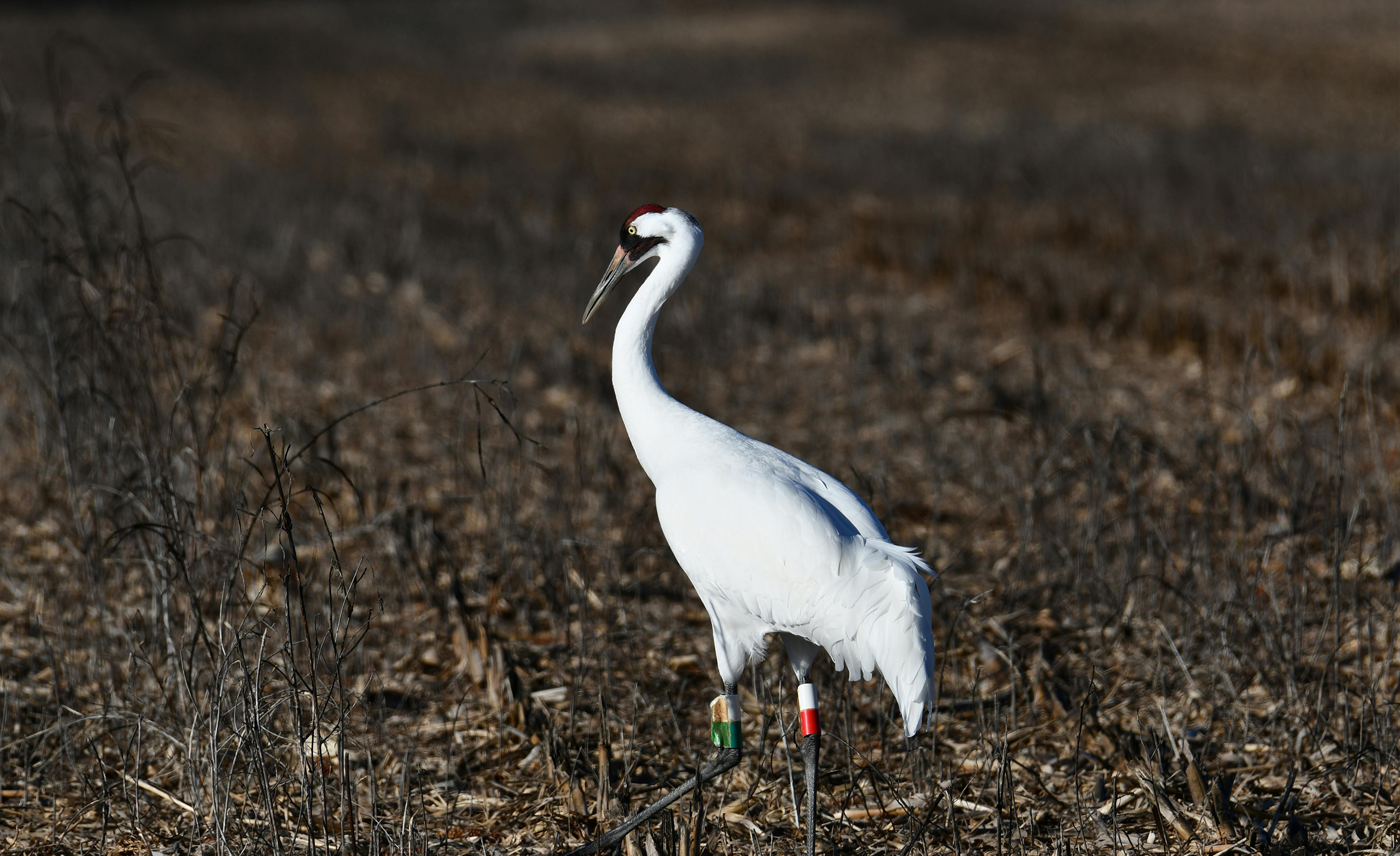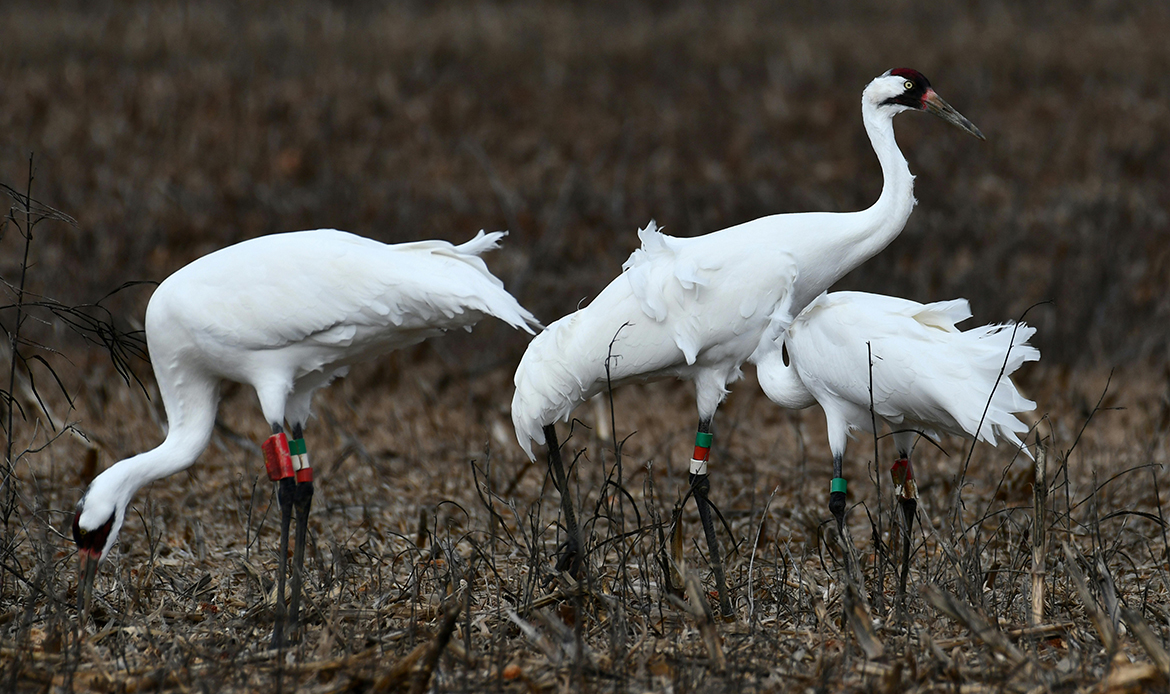
Skyward Elegance: Why the Whooping Crane’s Future is in Jeopardy
The majestic Whooping Crane stands as one of North America’s most iconic and endangered bird species. These remarkable creatures, with their pristine white plumage and distinctive red crown, represent both the triumph of conservation efforts and the ongoing challenges faced by wildlife in our modern world. As we delve into the complex story of the Whooping Crane’s survival, we must understand the factors that continue to threaten their existence and the urgent actions needed to protect them.
Historical Context and Population Decline
The Whooping Crane’s journey to the brink of extinction began in the early 20th century. These magnificent birds once roamed freely across North America, from the Arctic tundra to central Mexico. However, by 1941, their numbers had plummeted to just 15 wild birds, primarily due to habitat loss and unregulated hunting. This devastating decline served as a wake-up call for conservationists and led to unprecedented efforts to save the species.
Unique Characteristics and Behavior
Standing at nearly five feet tall, the Whooping Crane is North America’s tallest bird. Their distinctive appearance, characterized by white feathers, black wing tips, and a red-crowned head, makes them instantly recognizable. These birds are known for their elaborate courtship dances, which involve jumping, wing flapping, and loud vocalizations that can be heard for miles. Their remarkable migrations, spanning thousands of miles between breeding and wintering grounds, showcase their incredible endurance and navigational abilities.
Current Threats to Survival
Despite conservation successes that have brought the wild population to approximately 500 birds, Whooping Cranes face numerous contemporary challenges:
- Habitat Loss and Fragmentation The conversion of wetlands and prairies to agricultural land continues to reduce suitable breeding and wintering grounds. Urban development and industrial expansion further fragment their critical habitats, making it increasingly difficult for these birds to find safe spaces for nesting and feeding.
- Climate Change Impacts Rising temperatures and changing precipitation patterns affect the wetland ecosystems that Whooping Cranes depend on. Drought conditions can reduce food availability and alter migration patterns, while extreme weather events can destroy nests and impact breeding success.
- Human Disturbance Increased human activity near crane habitats, including recreation, agriculture, and energy development, can disturb breeding pairs and affect their reproductive success. Collisions with power lines and wind turbines pose additional risks during migration.

Conservation Efforts and Challenges
Current conservation initiatives focus on several key areas:
- Habitat Protection and Restoration Organizations work to preserve and restore crucial wetland habitats through land acquisition and management programs. These efforts ensure that Whooping Cranes have access to suitable breeding and wintering grounds.
- Captive Breeding Programs Specialized facilities maintain captive populations for breeding and research purposes. These programs help maintain genetic diversity and provide opportunities for population supplementation.
- Migration Route Protection Efforts to protect and manage stopover sites along migration corridors are crucial for the species’ survival. This includes working with landowners to maintain suitable habitat and reducing potential hazards along flight paths.
Future Outlook and Need for Action
The future of the Whooping Crane hangs in a delicate balance. While conservation efforts have prevented their extinction, several critical steps are necessary to ensure their long-term survival:
- Enhanced Habitat Protection Expanding protected areas and implementing stronger regulations to preserve wetland ecosystems is essential. This includes both breeding grounds in Wood Buffalo National Park and wintering areas along the Gulf Coast.
- Climate Change Mitigation Addressing climate change through reduced emissions and improved habitat resilience is crucial for maintaining suitable crane habitats. This requires both local and global action to protect these vulnerable ecosystems.
- Public Education and Engagement Raising awareness about Whooping Crane conservation helps build support for protection measures and encourages responsible behavior in crane habitats. Public engagement is crucial for the success of conservation programs.
- International Cooperation Since Whooping Cranes migrate between Canada and the United States, continued international cooperation is vital for their protection. This includes coordinated conservation efforts and shared resources for research and monitoring.
Call to Action
The preservation of the Whooping Crane represents more than just saving a single species – it symbolizes our commitment to protecting Earth’s biodiversity and natural heritage. As these magnificent birds face ongoing challenges, our actions today will determine their fate for future generations. Supporting conservation organizations, advocating for habitat protection, and raising awareness about their plight are ways we can contribute to ensuring these elegant creatures continue to grace our skies.
Conclusion
The Whooping Crane’s story is one of both hope and urgency. While conservation efforts have brought them back from the brink of extinction, their future remains uncertain. Only through continued dedication, research, and action can we ensure these remarkable birds survive and thrive for generations to come. Their recovery stands as a testament to what we can achieve through concentrated conservation efforts, but their ongoing challenges remind us that the work is far from over.
